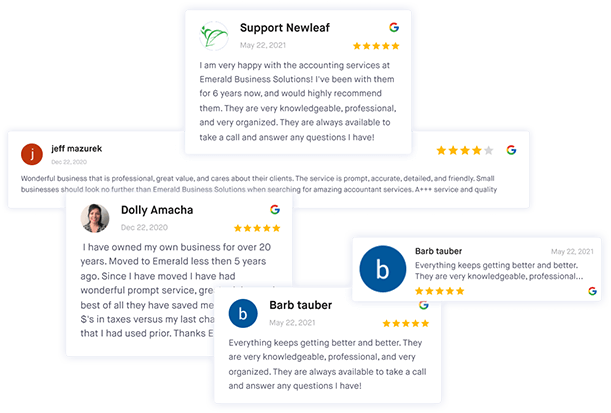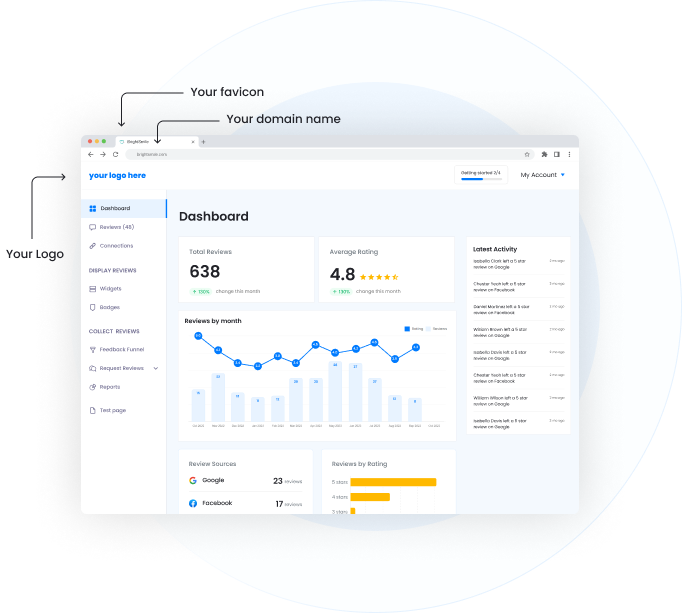Getting SEO clients today isn’t just about ranking high or sending more cold emails. It’s about being discoverable in the right places (such as Google, LinkedIn, online communities, and AI-driven search), and turning that visibility into trust that converts.
If you’re wondering how to get SEO clients, the key is clarity, credibility, and fast path to value. Package services your buyers understand, show measurable outcomes, and build a consistent deal flow without relying on generic tips or spammy outreach.
By the end of this guide, you’ll know exactly how to attract better SEO clients, close them faster, and keep them longer.
1. Specialize So Buyers Can Say “You’re For Us”
Positioning is the promise you make and who you make it to, while specialization is how you translate that into a focused service for a focused buyer.
When you specialize, prospects know you understand their constraints, tech stack, and success metrics, so they can picture working with you faster.
To start narrowing your focus, use these practical steps:
- Commit to a clear buyer segment: Choose a vertical (e.g., multi-location clinics, SaaS companies) or a capability niche (e.g., technical SEO for complex migrations). Speak their language across your site, proposals, and content.
- Productize the work around that segment: Create fixed-scope packages tied to typical problems in the niche (e.g., Shopify technical cleanup, marketplace listing SEO).
- Align proof with specific pains: Publish teardown posts, outcome screenshots, and a short “here’s what changed” narrative that mirrors your package deliverables. Buyers read themselves into the story.
- Price for decisiveness: Use “starting at” anchors and optional add-ons that match the segment’s usual budget and decision speed. Transparent pricing pre-qualifies calls and reduces back-and-forth.
Publish Authority Content That Builds Trust
Authority content is what separates credible agencies from those repeating surface-level advice. It shows how you think, how you solve complex problems, and what kind of results clients can expect. Done right, it attracts qualified leads who already understand the value of SEO and are looking for an expert, not a generalist.
Focus On High-Value Problems
The best topics to write about are the ones your buyers actually pay to fix. Prioritize technical or strategic challenges such as Core Web Vitals slowdowns, site migration risks, or duplicate location pages that hurt conversions.
Frame each piece around tangible business outcomes like lead growth, revenue improvement, or reduced risk. This keeps your content anchored in what clients care about most: measurable impact.
Show Your Process And Results
Buyers trust transparency. Include simple visuals, sanitized screenshots, or anonymized metrics that walk readers through your diagnostic process.
Explain what you found, how you approached the fix, and what changed as a result. Even small before-and-after insights help readers picture what it’s like to work with you.
Connect Content To Your Services
Make it easy for readers to move from learning to hiring. Link each article naturally to a relevant service or audit page that expands on the same problem you just solved.
Interlink related posts so evaluators can explore deeper without leaving your site. The goal is to turn educational content into a seamless path toward conversion.
Expand Across Channels
Every strong piece of content deserves multiple lives. Repurpose your article into a LinkedIn carousel, a short Loom explainer, or a talking point for partner webinars and podcast interviews.
This repetition keeps your insights visible across the platforms where potential clients spend time. The more consistently your perspective appears, the more credible and memorable your brand becomes.
Authority content works because it gives prospects proof before the pitch, and that makes every conversation warmer and easier to close.

Offer Reputation Management Under Your Own Brand
Use our white label reputation management solution to help clients collect reviews, monitor feedback, and build trust in one place.
3. Turn Free Audits Into Paid Engagements
Buyers want a taste of how you think before they commit. A limited audit demonstrates value quickly, but it must be scoped to protect your time and create a clear next step.
Here’s how to do it right:
- Define a tight scope and timebox: Limit to 3-5 prioritized issues with business impact, a two-page findings document, and a 5-minute video walkthrough. This shows expertise while preserving your deeper playbook.
- Target accounts with visible wins: Prioritize sites with obvious technical drag (slow templates, thin location pages) or category pages underperforming despite authority.
- Attach a decision path: End the review with two paid options (e.g., a fixed-fee diagnostic or a pilot retainer) and a 10-day validity window. Scarcity keeps deals moving.
- Follow a simple sequence: Follow a simple sequence: deliver the audit, send a short email recap, check in after three days with a clarifying question, then follow up a week later with a quick success story that relates to their situation.
4. Build Strategic Partnerships That Send You Clients
Partnerships convert because they arrive warm. Think beyond web design and look for adjacent vendors and communities whose clients repeatedly face SEO problems you can solve quickly.
To start building strategic partnerships that actually send you clients:
- Target complementary providers: Shortlist design and development studios, PPC agencies, branding firms, and content teams whose clients often need SEO support after launching a new site or campaign. Create a simple one-page “how we fit” handout that explains how your services complement theirs.
- Pitch a clear value exchange: Offer co-marketing, referral fees, or white-label support during peak periods. Spell out responsibilities and lead handoff rules to avoid ambiguity.
- Co-create an asset that attracts leads: Host a joint teardown webinar, a niche “site clinic,” or a migration checklist. Repurpose the content for social media and partner newsletters to reach a wider audience.
- Run a monthly partner cadence: Log intros, referrals, and outcomes. Share short case snippets and “wins since we last spoke” to keep momentum and reciprocity high.
Oscar Scolding, the founder of Eclypse SEO has seen this first-hand:
Partnerships and affiliates are one of the best ways to bring on new SEO clients with minimal effort required.
Building a strong network of agencies and freelancers that offer a similar service to your desired target audience without competing with one another and then incentivizing the referral.
5. Use LinkedIn Without Being “That Person”
LinkedIn works when your feed builds credibility and your messages feel like help, not a script. Treat it like a light-touch nurture program aimed at the right buyers.
Instead of pitching strangers, focus on showing your expertise publicly and building relationships through useful, personalized outreach:
- Publish credibility content two–three times a week: Rotate teardown threads, “what changed” mini-stories, and opinion posts on niche topics. Invite conversation with a single, specific prompt.
- Lead DMs with one real observation: Open with a concise, relevant point (“your store category pages load in 4s on mobile”), offer a 60-second video walkthrough, and ask a low-pressure question.
- Log conversations and measure replies: Track acceptance rate, reply rate, and meetings booked. Prune scripts that underperform and double down on messages that start calls.
- Build social proof on-platform: Surface client shout-outs, repurpose reviews, and pin a short “what we do” post to your profile to pre-qualify traffic from content.
6. Send Cold Emails That Land Meetings
Cold email outreach still works for specialized offers when you respect consent norms and make every line relevant. Think list quality, gentle sending, and a message that clearly answers “why me, why now?”
Here’s what you should do:
- Protect your sender reputation: Warm up new domains, keep daily sending volume conservative, authenticate (SPF, DKIM, DMARC), and throttle sending ramps. Healthy domain reputation beats spray-and-pray.
- Write for one problem, one action: Use short, scannable copy that points to a single fix you can show fast. Include a frictionless opt-out and transparent identity to stay compliant.
- Personalize with observable signals: Reference a real issue (Core Web Vitals, duplicate titles, thin location pages) and ask a question they can answer in one line. Real signals earn replies.
- Sequence lightly and stop early: Send an initial note, one value-add follow-up, and a breakup email with a small asset (e.g., a one-minute video walkthrough). If they don’t engage, move on and preserve your reputation.
Get Listed Where Buyers Already Look
Directories and marketplaces work when they’re treated like landing pages: specific, proof-rich, and up-to-date. They also reinforce credibility for prospects who are checking you across the web. Each listing should act as a mini version of your website that converts attention into action.
Prioritize Relevant Platforms
Start by identifying directories that actually reach your target audience. General platforms like Clutch, GoodFirms, or UpCity can work well, but niche directories are often more targeted and higher converting.
Evaluate each one by audience fit, category depth, and lead quality before investing time in setup. Choosing fewer but better platforms gives you cleaner, easier-to-manage visibility.
Complete The Profile Like A Sales Page
Think of your directory listing as a focused landing page. Write copy that speaks directly to your niche, include recent project examples, and highlight measurable results instead of buzzwords.
Add visuals, logos, and testimonials to make your profile stand out. Every element should make it clear what you do, who you help, and what outcomes you deliver.
Keep Your Listings Fresh With Reviews
Ask clients for feedback at key project milestones so your profiles always feel active and trustworthy.
Consistent, recent reviews show potential buyers that you’re still delivering results and building long-term client relationships. Make review collection part of your handoff process, not an afterthought.
Measure And Refine Your Presence
Once your listings are live, track both volume and quality of inquiries. Note which platforms send serious leads and which ones attract mismatched prospects.
Refresh your top-performing profiles quarterly and remove underperforming listings to keep your visibility sharp and credible.
8. Offer Reputation Management As a Built-In or Add-On Service
Decision-makers care about discoverability and trust, and reviews influence both. When you package review generation, monitoring, and response workflows, you reduce perceived risk and create a sticky, recurring service line.

Offer Reputation Management Under Your Own Brand
Use our white label reputation management solution to help clients collect reviews, monitor feedback, and build trust in one place.
To offer reputation management effectively as part of your SEO services, focus on the following areas:
- Position it where it fits: Offer reputation as a core module in local SEO retainers or as a clear add-on for multi-location brands. Tie it to visibility and conversion, not vanity.
- Package concrete outcomes: Include monthly review volume targets, response SLAs, and distribution to key profiles. 86.2% of consumers use Google to look up reviews, so make Google a centerpiece.
- Educate buyers with simple dashboards: Report star trends, response times, and platform coverage. Clear visibility builds confidence and reinforces the value of your ongoing work.
Pro tip: You can use ReviewsOnMyWebsite’s white-label reputation management solution to manage online reviews for multiple clients.

9. Price & Package For Speed
When your pricing or scope feels unclear, buyers hesitate. They don’t want to waste time guessing what’s included or whether they can afford it. Productized packages solve that problem by showing exactly what clients get, how much it costs, and what outcomes to expect.
This clarity makes it easier for serious prospects to reach out and helps you avoid conversations with people who were never a good fit in the first place.
To make your pricing clear and appealing, focus on these best practices:
- Publish three tiers that match complexity: Create Starter, Growth, and Advanced packages with crisp deliverables and success signals. Use add-ons (e.g., content production, digital PR) to keep the base scope lean.
- Anchor around outcomes and constraints: Frame deliverables in terms of what improves (e.g., crawl efficiency, page experience, location coverage). Make limits explicit to protect margins.
- Show “starting at” ranges: Transparent anchors reduce sticker shock and deter tire-kickers. Revisit prices quarterly as demand, costs, and conversion data evolve.
- Reflect how buyers budget: In many organizations, SEO competes with paid channels, so your offer must show how it earns its slice.
10. Create Proposals That Close
A strong proposal clarifies trade-offs, lowers risk, and points to a simple acceptance path. Think of it as a visual brief, not a wall of text.
Here’s how to create it:
- Open with a short situation statement: Recap the business goal, constraints, and the specific SEO problems you’ll tackle first. Show you listened.
- Lay out a believable roadmap: Use phases (diagnose, fix, accelerate), success metrics, and timelines the buyer recognizes. Tie milestones to visible outcomes.
- Insert proof in context: Embed short case snippets and screenshots near relevant sections so readers connect evidence to your plan.
- Set clear next steps and dates: Tell the prospect when you’ll check in again, how long the proposal is valid, and how to approve it. Having a clear deadline and a simple way to say yes keeps deals moving forward instead of getting stuck.
11. Optimize for AI-Powered Search
AI optimization means preparing your website and brand signals so they can be accurately referenced by AI search experiences. The goal is to make your content credible, consistent, and quotable when large language models summarize results.
Here’s how to do it:
- Clarify entities and services: Maintain unambiguous “About” and service pages with consistent names, locations, and schema. Large Language Models (LLMs) need clear entities to attribute correctly.
- Write Q&A-style explainers: Add concise, conversational sections that answer buyer questions directly (e.g., “What is a local SEO audit?”). Short, factual language is easy for AI to lift.
- Earn mentions from trusted sites: Publish guest perspectives, collaborate on research, and participate in niche communities to create attributable citations.
- Keep reviews fresh and visible: Reputation signals help AI evaluate credibility, so keeping your reviews recent and responses active strengthens how your brand is represented in AI search results.
Frequently Asked Questions About Getting SEO Clients
How do I get my first SEO client?
Start with a small, clear niche and offer a limited audit that solves one specific problem. Publish a pillar post that shows how you think, then reach out with one observation and a short video walkthrough to open the conversation.
Ask for a review after your first visible win to compound credibility for the next prospect.
How do SEO agencies find clients today?
Most agencies rely on a mix of referrals, partnerships, intent-driven directories, and targeted outreach. Referrals grow from consistent delivery and visible social proof, while partners provide warm introductions you can’t reach alone.
Directories capture high-intent searches, and light, compliant email fills calendar gaps when you want to accelerate.
What if I have no case studies yet?
Scope pilot projects with clear boundaries and permission to publish outcomes. Document the problem, what you changed, and the measurable result in a brief narrative with visuals. One authentic micro-case with a review is enough to start a repeatable motion.
What should I charge for SEO services?
Price based on scope and measurable outcomes, not hours. Publish three productized tiers with explicit inclusions and leave advanced items as add-ons. Revisit your rates quarterly as demand, costs, and conversion data shift.
How can I get high-ticket SEO clients?
Specialize in complex, high-impact projects like large-scale site migrations or enterprise technical cleanups. Build deep case studies that show your process and results, speak at niche industry events, and partner with companies that serve the same audience. In proposals, emphasize how your work reduces risk, improves stability, and strengthens governance.
Do directories and marketplaces actually work?
They do when profiles are complete, recent, and proof-rich. Treat them like landing pages with tight copy, case snippets, and recent reviews, then measure lead quality for 60–90 days. Keep the platforms that send aligned inquiries and prune the rest.
How do I avoid sounding spammy on LinkedIn or email?
Lead with one specific observation and a helpful suggestion rather than a services list. Keep messages short, allow an easy opt-out, and follow up once with extra value. If there is no engagement, move on to protect your reputation.
Ship A System, Not Random Outreach
You don’t need more tactics. You need a rhythm you can sustain.
Specialize so the right buyers see themselves in your offer, show proof through real results, build partnerships that send warm leads, and keep your outreach specific and compliant.
Learning how to get more SEO clients is not about hacks or volume. It comes down to consistent effort, early wins that build confidence, and visible proof that earns trust week after week.




